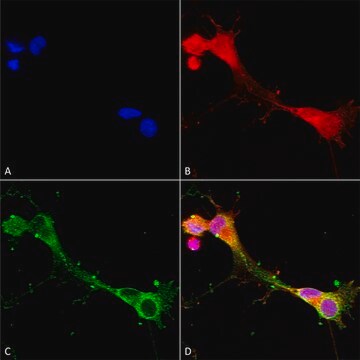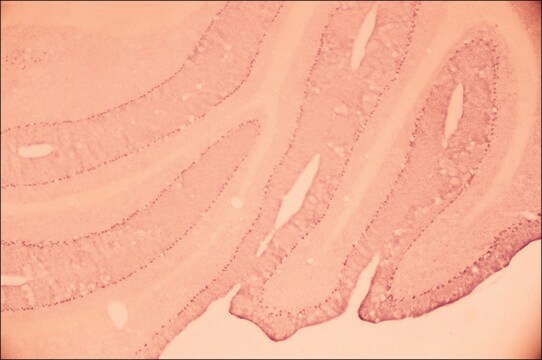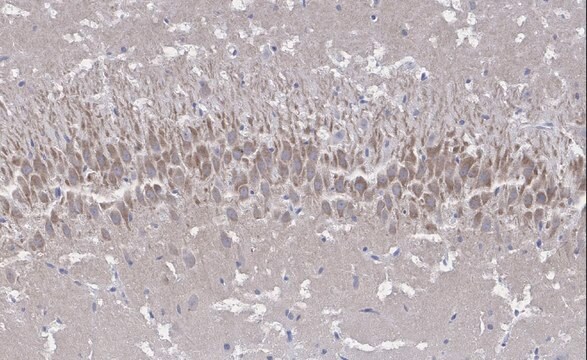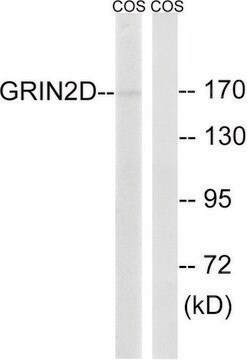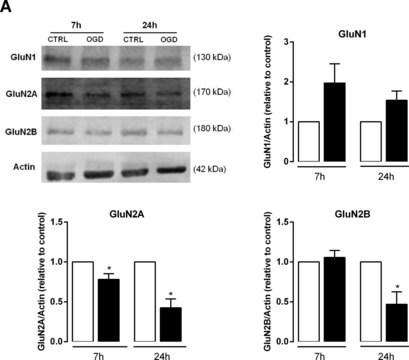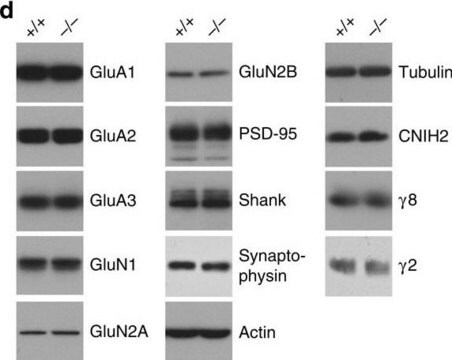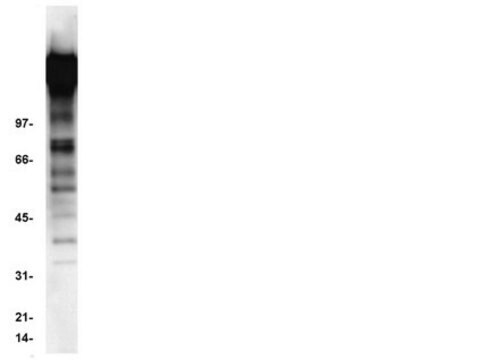M264
Anti-Glutamate Receptor NMDAR2A (NR2A) antibody produced in rabbit
affinity isolated antibody, lyophilized powder
Sinónimos:
NR2A Antibody - Anti-Glutamate Receptor NMDAR2A (NR2A) antibody produced in rabbit, Nr2A Antibody
About This Item
Productos recomendados
biological source
rabbit
Quality Level
conjugate
unconjugated
antibody form
affinity isolated antibody
antibody product type
primary antibodies
clone
polyclonal
form
lyophilized powder
mol wt
antigen 180 kDa
species reactivity
rat, mouse, human
technique(s)
immunohistochemistry: 1:1,000-1:2,000
immunoprecipitation (IP): 3 μL using 200 μg of rat brain
western blot: 1:1,000
UniProt accession no.
storage temp.
−20°C
target post-translational modification
unmodified
Gene Information
human ... GRIN2A(2903)
mouse ... Grin2a(14811)
rat ... Grin2a(24409)
General description
Immunogen
Application
Western Blotting (1 paper)
Physical form
Disclaimer
¿No encuentra el producto adecuado?
Pruebe nuestro Herramienta de selección de productos.
Optional
Storage Class
11 - Combustible Solids
wgk_germany
WGK 2
flash_point_f
Not applicable
flash_point_c
Not applicable
ppe
Eyeshields, Gloves, type N95 (US)
Elija entre una de las versiones más recientes:
¿Ya tiene este producto?
Encuentre la documentación para los productos que ha comprado recientemente en la Biblioteca de documentos.
Nuestro equipo de científicos tiene experiencia en todas las áreas de investigación: Ciencias de la vida, Ciencia de los materiales, Síntesis química, Cromatografía, Analítica y muchas otras.
Póngase en contacto con el Servicio técnico